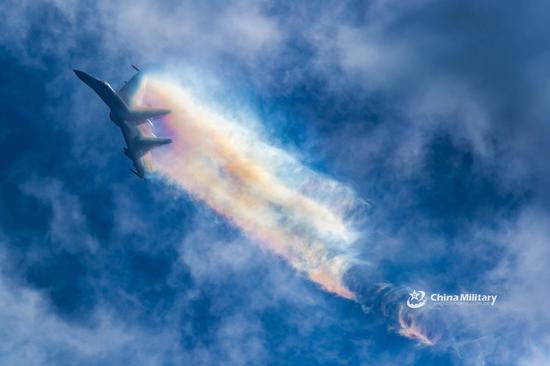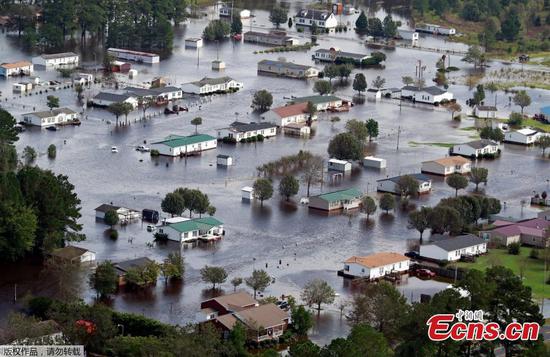A Chinese-led research group found that it took less than 30,000 years and perhaps only thousands for a massacre of over 90 percent of sea creatures and most land species about 252 million years ago.
The study published on Wednesday in the Geological Society of America Bulletin showed the duration of the end-Permian mass extinction was within about 31,000 years, essentially instantaneous by geological standards.
"The mass extinction may have occurred in only thousands of years, but the analytical uncertainty of current CA-ID-TIMS dating technique prevents us from getting a more meaningful constraint for less than 30,000 years," said Shen Shuzhong from the Nanjing Institute of Geology and Palaeontology (NIGPAS) of the Chinese Academy of Sciences, the lead author of this paper.
Scientists from China, the United States and Canada combined new high-resolution radiometric dating of seven ly spaced layers of volcanic material from South China's Penglaitan section.
The Penglaitan sediments were deposited in shallow, tropical waters where sediments accumulated more than 100 times faster than in the Meishan beds in East China, a previous international reference for the Permian-Triassic boundary.
It made the Penglaitan sediment much thicker than Meishan for a comparable period of time, allowing the scientists to study the events at that time at a much higher temporal resolution.
The study also suggested that the sudden extinction may have been caused by Siberian flood-basalt eruptions, along with local intensive explosive volcanism that may have started some 420 thousand years before the mass extinction.
These events may have significantly reduced the stability of Late Permian ecosystems to the point where a single extreme incident finally resulted in a sudden ecosystem collapse, according to the study.
The study found that 29 of the 66 Permian species identified in the section disappeared within or at the top of a single bed of volcanic ash-rich sandstone (Bed 141). This highly diverse marine ecosystem suddenly disappeared during the time of deposition of Bed 141.
Previously, scientists working on the problem were not even sure whether there was one pulse or two pulses of extinction at the Permian-Triassic boundary, or whether some Permian species actually survived into the earliest Triassic beds.
The findings suggested that the environmental effects of volcanic gases like carbon dioxide, methane and sulfur dioxide could have been deadly.
A lethal greenhouse warming, oceans depleted of dissolved oxygen, acid rain, and atmospheric pollution by heavy metals would have made life difficult.
The researchers said there was substantial warming of up to 10 degrees Celsius immediately after the mass extinction event.
"This might explain the shift in sediment type from limestones in the Permian to early Triassic black shales, indicating ocean anoxia," said Shen.
A warming climate may cause ocean currents to become sluggish while at the same time bringing increased nutrients into the sea from increased weathering and river runoff, according to Shen.
The reduction in mixing of oxygen-rich waters from the ocean surface with deeper waters, and the increase in ocean productivity triggered by the increased nutrient supply, could have led to increased organic carbon deposition and resulting ocean anoxia. Enditem


















































